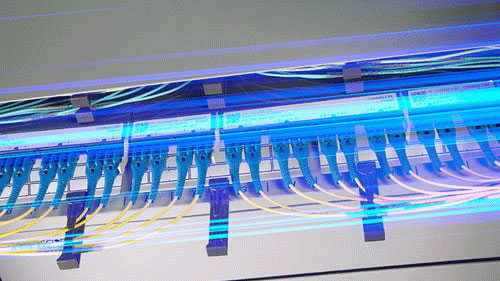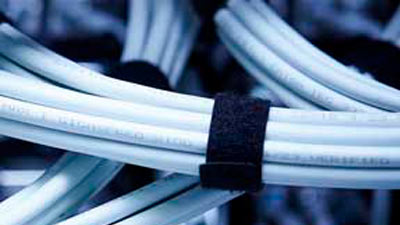
Planning a data center that is ready for future applications?
Read our new 2023 Data Center trends ebook to keep you ahead of what's next.
Authored by CommScope’s data center experts, this 9-chapter eBook is intended to advise those responsible with building an enterprise data center on how to best evaluate these decisions, with an in-depth emphasis on choices related to the physical layer infrastructure. This eBook includes tips, answers and insight to help demystify the technology, untangle the complexity and accelerate time to market so you can identify the challenges—and opportunities—in your own data center.
Whether the data center configuration calls for point-to-point or switch-to-switch connections, the increasing fiber counts create major challenges for data centers in terms of delivering the higher bandwidth and capacity where it is needed.
The first: How do you deploy fiber in the fastest, most efficient way? How do you put it on the spool? How do you take it off of the spool? How do you run it between points and through pathways?
Once it’s installed, the second challenge: How do you break fiber out and manage it at the switches and server racks?
The challenge for data center network managers is mapping out their journey to 400G/800G and beyond without knowing what twists and turns lie ahead and how or where the three paths will intersect, as with 400GBase-SR4.2.
Therein lies the value of OM5 multimode optical fiber, a new multimode optical fiber designed and standardized to support multiple wavelengths in a single fiber core.
During the past several years, we’ve seen network fabric link speeds throughout the data center increase from 25G/100G to 100G/400G. Every leap to a higher speed is followed by a brief plateau before data center managers need to prepare for the next jump.
Currently, data centers are looking to make the jump to 400G. A key consideration is which optical technology is best.
The continual journey to higher speeds in the data center is a step process; as applications and services evolve, storage and server speeds must also increase. Adopting a systematic approach to handle the repeated periodic upgrades can help reduce the time and cost needed to plan and implement the changes.
Today’s challenge is 400G; tomorrow, it will be 800G or 1.6T.
100G optics are hitting the market en masse, and 400G is expected sometime next year. Nevertheless, data traffic continues to increase, and the pressure on data centers is only ramping up.
Things are moving fast, and—spoiler alert—they’re about to get much faster. The good news is that, between the standards bodies and the industry, significant and promising developments are underway that could get data centers to 400G and 800G.
MTDCs that are flexible and ready to accommodate a variety of customer configurations can fully take advantage of their location at the edge of the network, as well as proximity to areas of dense population.
Some MTDC customers will know what their requirements are and provide their own equipment. Other customers moving their operations off-premises to an MTDC will require expert guidance to support their applications.
A successful MTDC should be ready to accommodate both scenarios.
According to Gartner1, by 2025, 75 percent of enterprise-generated data will be created and processed at the edge— up from just 10 percent in 2018.
As networks plan for migration to 5G and IoT, IT managers are focusing on the edge and the increasing need to locate more capacity and processing power closer to the end users. As they do, they are re-evaluating the role of their data centers.
Inside the MTDC, customer networks are quickly flattening and spreading out east and west to handle the increase in data-driven demands. Once-disparate cages, suites and floors are now interconnected to keep pace with applications like IoT management, augmented reality clusters, and AI processors.
However, connectivity into and within these data centers has lagged.
Hyperscale and multitenant data center managers are experiencing this firsthand. They are just beginning to migrate to 400G and 800G data speeds, but the bar has already been raised to 1.6T.
The race is on, while the best path to 1.6T is uncertain, aspects of it are coming into focus.
If you are interested in this eBook, you may also be interested in:
Meet Propel
CommScope’s next high speed migration fiber platform
Products
SYSTIMAX structured cabling solutions
Find more eBooks available from the eBooks page.



